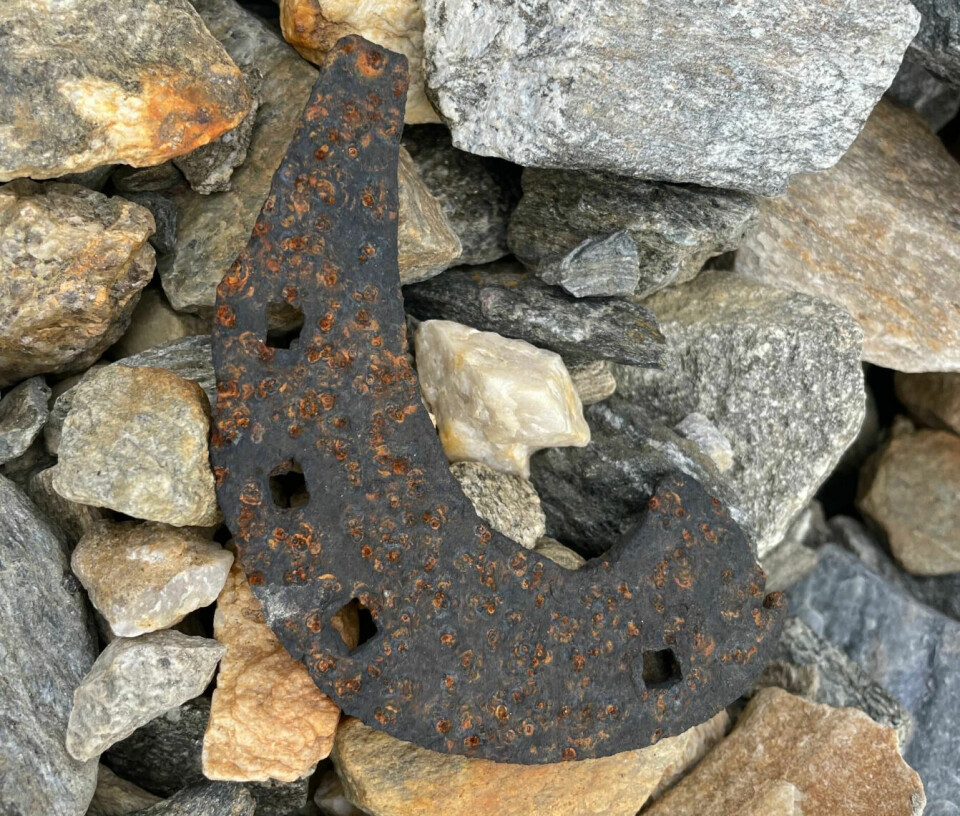
Melting ice near Norway's highest mountain reveals horse bridle that could stem from the Viking Age
Archaeologists have discovered an ancient bridle and other artifacts from a mountain pass almost 2,000 meters above sea level.
Near a mountain pass, not far from Norway's highest mountain Galdhøpiggen, archaeologists have found traces of horse travel.
A metal bit and parts of the leather straps that fasten around the horse's head have emerged from under the ice.
“The bridle has a shape that suggests it could be from the Viking Age,” Espen Finstad says to sciencenorway.no.
He is a glacial archaeologist at Innlandet County Municipality.
Horses almost 2,000 metres above sea level
Traffic through a mountain pass on Lomseggen was at its peak during the Viking Age.
Snow and ice melting in the area has previously uncovered hundreds of ancient artifacts. They have revealed that Norwegians used this mountain pass for more than 1,200 years (link in Norwegian).

But the bridle that archaeologists have found this year suggests that it wasn't just people who walked here.
Horses have also been part of the journey, almost 2,000 metres above sea level.
“We have never made such a discovery before. It essentially completes the picture that this is an ancient travel route,” Finstad says.
This is how the archaeologists, who work in the Secrets of the Ice protection programme, described the find on social media:
We just made an incredibly discovery on the south side of the Lendbreen pass: An iron horse bit, with parts of the leather bridle preserved!❤️ It could well be from the Viking Age, when traffic through the pass was at its peak. But let's see what the radiocarbon date says. pic.twitter.com/cIRNXsZD9Y
— Secrets Of The Ice (@brearkeologi) September 7, 2023
A few months until they get the answer
Most viewed
The strap, or halter, which is attached to the bit, is especially exciting for the archaeologists.
It actually makes it possible to date the horse bridle.
Through carbon-14 dating, the archaeologists will find out if the find really is from the Viking Age.
Finstad estimates it will take a few months to get the final answer, but they are fairly certain that it originates from the Iron Age or the early Middle Ages.
Horse manure and horseshoes
The horse bridle is just one of the discoveries archaeologists have made on this year's expedition.
They also found horse manure, textiles, horseshoes, leaf fodder, part of a horse snowshoe, a knife, and a variety of small wooden objects. Altogether around 150 items.

Even though the mountain pass is like a gold mine for archaeologists, the finds are extremely rare in the grand scheme of things, Finnes points out.
The most special thing is that organic material like wood, leather, textiles, and faeces have been preserved.
The ice has functioned as a freezer for hundreds of years. But now it’s melting.
“The fact that the ice is now melting due to man-made climate change is tragic. The paradox is that new and exciting knowledge about our common past is emerging,” Finnes says.
———
Translated by Alette Bjordal Gjellesvik.
Read the Norwegian version of this article on forskning.no





































